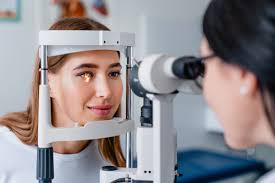
Inherited retinal diseases (IRDs) are a group of eye disorders caused by genetic mutations affecting the retina, the light-sensitive tissue at the back of the eye responsible for vision. These diseases can lead to vision loss or blindness and can manifest at any age. Understanding how IRDs happen involves exploring genetics, the function of the retina, and the impact of specific mutations on retinal health.
Genetic Foundations of IRDs
The retina is a complex structure composed of several layers of cells, including photoreceptors (rods and cones) that detect light and send visual information to the brain. The function and health of these cells are governed by numerous genes. Mutations in these genes can disrupt the normal function of the retina, leading to IRDs.
IRDs are typically inherited in one of three genetic patterns: autosomal dominant, autosomal recessive, or X-linked.
- Autosomal Dominant: In this pattern, a single copy of the mutated gene from one parent is enough to cause the disease. Each child of an affected parent has a 50% chance of inheriting the mutated gene and the disease.
- Autosomal Recessive: Both copies of the gene (one from each parent) must have mutations for the disease to manifest. Parents of an affected individual are usually carriers, each having one mutated gene copy but typically not showing symptoms. There is a 25% chance that a child will inherit two mutated copies and develop the disease.
- X-Linked: These diseases are caused by mutations in genes on the X chromosome. Males (with one X and one Y chromosome) are more likely to be affected because they have only one X chromosome. Females (with two X chromosomes) are often carriers, but can be affected if both X chromosomes carry the mutation.
Types of Inherited Retinal Diseases
Some common IRDs include:
- Retinitis Pigmentosa (RP): This group of diseases affects the photoreceptors and retinal pigment epithelium. Symptoms include night blindness and loss of peripheral vision, progressing to tunnel vision and sometimes complete blindness.
- Leber Congenital Amaurosis (LCA): A severe form of IRD that presents in infancy, causing significant vision loss or blindness. LCA is often linked to mutations in several different genes.
- Stargardt Disease: This disease affects the macula, the central part of the retina, leading to progressive loss of central vision. It is commonly caused by mutations in the ABCA4 gene.
- Cone-Rod Dystrophy: This disorder affects the cones and rods, leading to loss of color vision, central and peripheral vision. Symptoms usually appear in childhood or early adulthood.
Diagnosing and Managing IRDs
Diagnosis of IRDs typically involves a combination of clinical examination, family history, and advanced genetic testing to identify specific gene mutations. Genetic counseling is crucial for affected individuals and their families to understand the inheritance patterns and risks for future generations.
While there is currently no cure for most IRDs, ongoing research is promising. Gene therapy, which aims to replace or repair defective genes, has shown significant potential. For instance, the FDA-approved gene therapy Luxturna (voretigene neparvovec) treats RPE65 mutation-associated retinal dystrophy. Additionally, advances in retinal implants and stem cell therapy offer hope for restoring vision.







2 Replies to “How do Inherited Retinal Diseases Happen?”
Md Sweem
07 Jun 2022voluptatem quia voluptas sit aspernatur aut odit aut fugit, sed quia consequuntur magni dolores eos qui ratione voluptatem sequi nesciunt.
Md Sweem
07 Jun 2022voluptatem quia voluptas sit aspernatur aut odit aut fugit, sed quia consequuntur magni dolores eos qui ratione voluptatem sequi nesciunt.